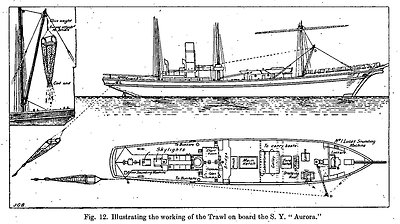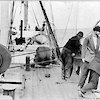The fourth scientific base
The AAE’s scientific effort was based in four separate places. Three of its bases were on solid foundations — at Cape Denison and on the Shackleton Ice Shelf and Macquarie Island. The fourth was on the rolling deck of that redoubtable former whaler-sealer Aurora.
Where the shore parties were to explore the land and ice around their bases, Davis and his men had the task of exploring over a much larger area in the Southern Ocean. This was then as it is now the least-known of Earth’s ocean waters. The 1872–1876 Challenger expedition had been the major Antarctic oceanographic venture up to then, but the seas crossed by the AAE had never before been subjected to dedicated marine science study.
Douglas Mawson knew the importance of studying the ocean. His integration of Southern Ocean research into his essentially land-based program gave the AAE its deserved reputation as the most comprehensive Antarctic scientific expedition to that time.
Another Yorkshire-born Australian, Charles Hedley — long a campaigner for more government support for marine science — was an ardent supporter of Aurora’s work. Practical support for Davis as master of Aurora came from the Norwegian master of the new Australian government fisheries vessel Endeavour, Harald Cristian Dannevig, who had hosted Frank Wild as a trainee aboard his ship during 1911.


